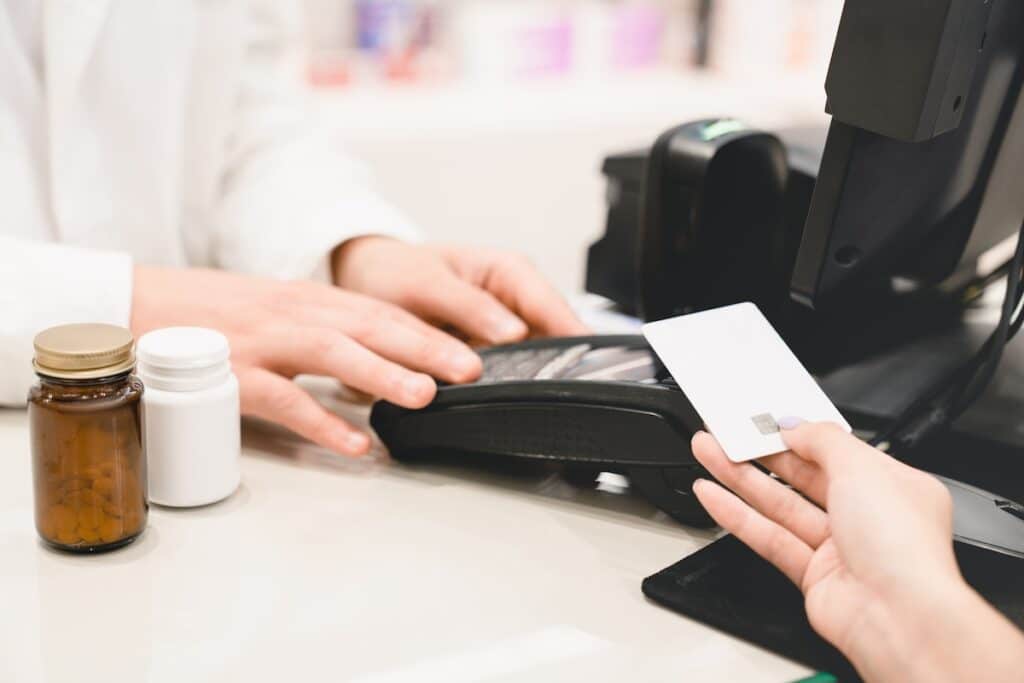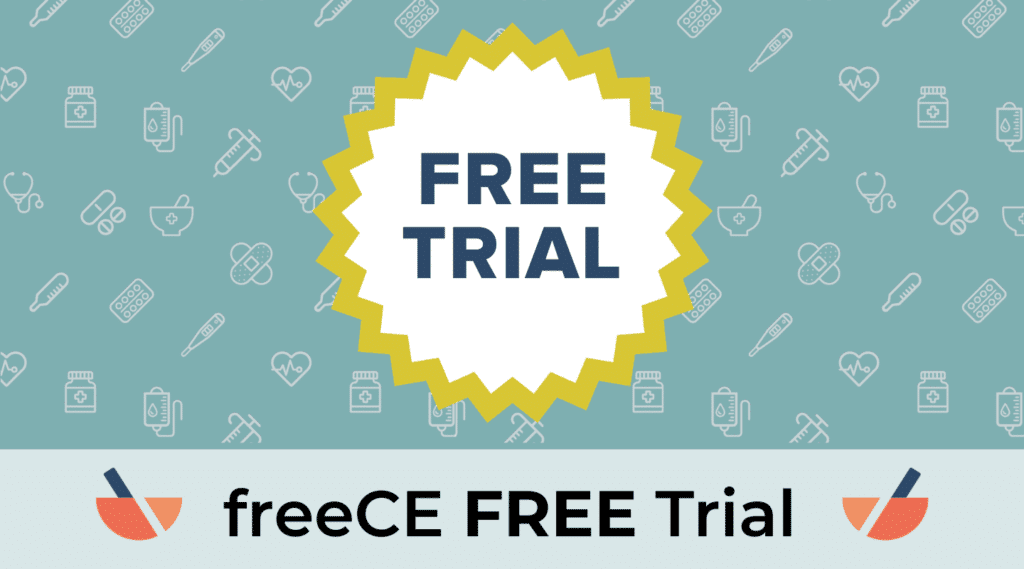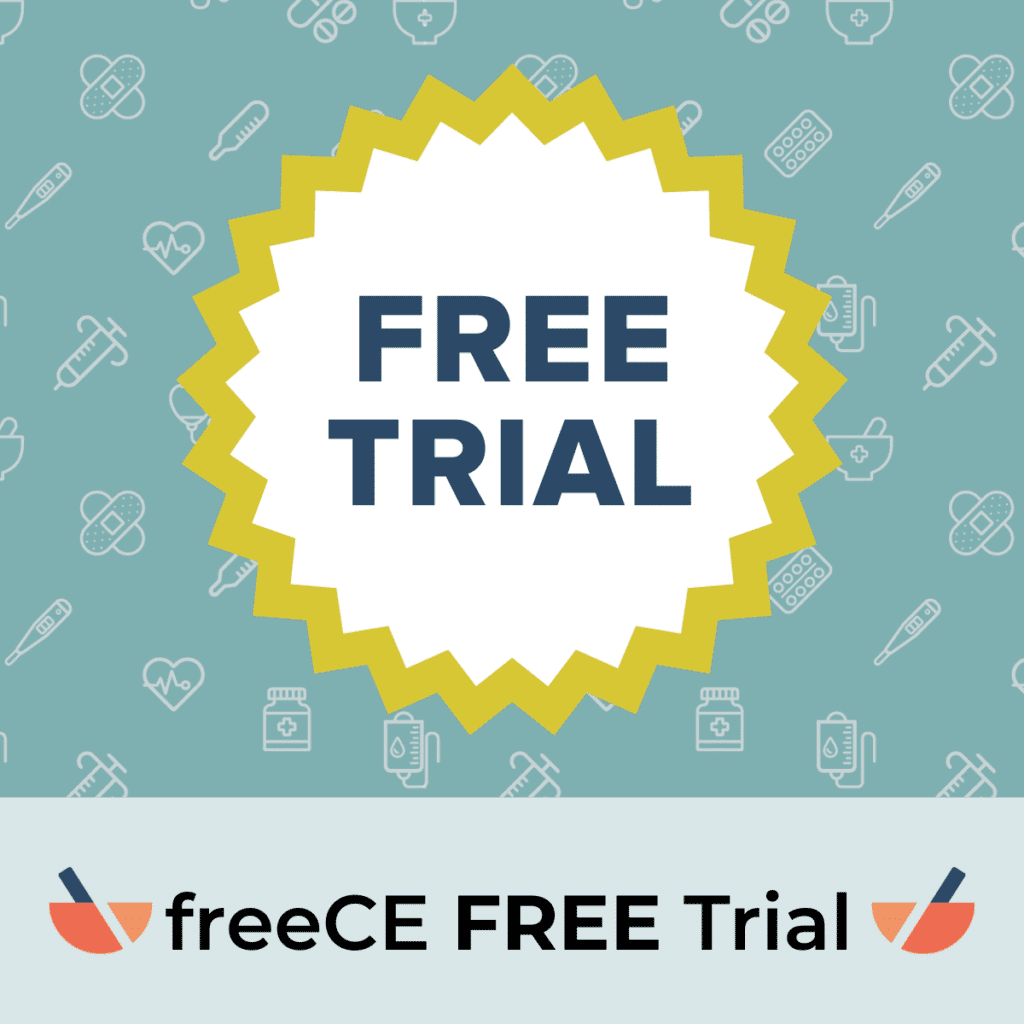Table of Contents
While the pharmacist is responsible for many steps in providing medication to patients, all tasks are centered around patient safety and wellness. For example, medication storage procedures ensure they are safe for use, and smooth operations ensure on-time availability of critical drugs.
Patient care is not limited to clinical interactions but includes a comprehensive approach that addresses financial barriers to medication access. Medications don’t work if our patients don’t take them. There are many reasons patients may not take their prescribed medications, but in this article, we will focus on the cost to the patient.
Explore PharmCon freeCE
Get a collection of our most popular courses with accredited CE’s and instant reporting absolutely free!
The high cost of prescription medications remains a significant barrier to healthcare access for many individuals. Driven by factors such as expensive research and development, marketing expenses, and complex supply chain logistics, the price of many essential medications has soared, placing a substantial financial burden on patients.
This issue is exacerbated by the lack of price regulation in many regions, allowing pharmaceutical companies to set prices without competitive constraints. Consequently, patients often face difficult choices between purchasing their necessary medications and other essential living expenses, leading to poorer health outcomes and increased overall healthcare costs due to untreated conditions.
Addressing this issue requires a multifaceted approach, including policy reforms, increased transparency, and the promotion of cost-saving measures such as the use of generic drugs and medication assistance programs.
How Pharmacists Can Help Patients Find Affordable Medication
An important step in advocating for patients and helping them access the best care is finding affordable medications. Here are ten ways pharmacists can guide them.
1. Generic Medications
Pharmacists can educate patients about the availability of lower-cost generic alternatives to brand-name medications. Generic medications contain the same active ingredients and are required by the FDA to meet the same standards for safety, efficacy, and quality as their brand-name counterparts. Pharmacists can work with patients and healthcare providers to switch to generic equivalents whenever appropriate, significantly reducing medication costs. This involves reviewing the patient’s current medications, identifying opportunities for generic substitution, and discussing these options with both the patient and their prescribing physician to ensure a seamless transition.
2. Medication Assistance Programs
Many pharmaceutical companies, government agencies, and nonprofit organizations offer medication assistance programs designed to help patients who cannot afford their prescriptions. Pharmacists can assist patients in accessing these programs by helping them complete necessary paperwork, gather required documentation, and understand eligibility criteria. These programs can provide financial assistance, discounts, or even free medications to eligible patients. Pharmacists can also keep abreast of new programs and changes to existing ones to ensure patients are always informed of their options.
3. Insurance Navigation
Understanding health insurance coverage can be complex and overwhelming for patients. Pharmacists can help by explaining the intricacies of prescription drug benefits, including copayments, deductibles, and formularies. They can provide guidance on selecting insurance plans during open enrollment periods, ensuring that patients choose plans that offer the most affordable medication coverage. This support can include analyzing different plan options, comparing out-of-pocket costs for medications, and assisting patients in applying for insurance or making changes to their existing plans.
4. Prescription Discount Cards
Prescription discount cards or programs offer significant savings on out-of-pocket medication costs and are often available at no charge. Pharmacists can inform patients about these options and help them utilize the savings effectively. They can provide guidance on how to obtain these cards, explain how they work, and assist in applying the discounts to the patient’s prescriptions. By regularly reviewing available discount programs, pharmacists can ensure patients are maximizing their potential savings on medications.
5. Medication Reviews and Therapy Optimization
Conducting comprehensive medication reviews allows pharmacists to identify opportunities for cost savings. This involves evaluating a patient’s entire medication regimen to find ways to reduce costs without compromising therapeutic outcomes. Pharmacists can identify and eliminate unnecessary medications, adjust dosages, or switch to more cost-effective alternatives. They can also monitor for drug interactions and side effects, ensuring that the medication regimen is both safe and effective. This personalized approach helps optimize therapy while managing expenses.
6. Refill Synchronization
Synchronizing medication refills can reduce the frequency of pharmacy visits and minimize dispensing fees. By aligning refill dates, patients can avoid running out of medications and paying multiple copayments for separate pharmacy visits. Pharmacists can coordinate with patients and healthcare providers to set up a synchronized refill schedule, making it more convenient for patients to manage their medications. This practice not only saves money but also improves adherence to medication regimens, leading to better health outcomes.
7. Over-the-Counter (OTC) Alternatives
For certain conditions, over-the-counter (OTC) medications or supplements can be suitable and more affordable alternatives to prescription medications. Pharmacists can recommend these options when appropriate, helping patients manage mild or self-limiting symptoms cost-effectively. They can also provide information on the proper use of OTC medications, potential interactions with other drugs, and any precautions that need to be taken. This guidance ensures that patients can safely and effectively use OTC products as part of their treatment plan.
8. Lifestyle Modifications
Educating patients about lifestyle modifications, such as dietary changes, exercise, and stress management, can complement medication therapy and reduce the long-term need for expensive medications. Pharmacists can provide counseling and support to help patients make sustainable lifestyle changes that can improve their overall health and well-being. For example, pharmacists can offer advice on managing conditions like hypertension or diabetes through diet and physical activity, potentially reducing the need for higher doses of medications or additional prescriptions.
9. Community Resources
Connecting patients with community resources, such as patient assistance programs, community health centers, free clinics, and local social services agencies, can provide additional healthcare services and financial assistance. Pharmacists can maintain a network of these resources and refer patients to appropriate services based on their needs. By leveraging community support, patients can access comprehensive care that addresses both medical and socioeconomic challenges, improving their ability to afford and adhere to their medication regimens.
10. Financial Counseling
Offering financial counseling and assistance to patients struggling with medication costs is another vital aspect of patient care. Pharmacists can explore various payment options, discuss financial plans, and provide resources to help patients navigate the financial challenges associated with healthcare costs. This might involve setting up payment plans for expensive medications, identifying alternative funding sources, or helping patients apply for financial aid programs. By addressing the financial aspect of medication access, pharmacists can reduce the stress and burden on patients, enabling them to focus on their health and recovery.
⭐️ Click here for more strategies for reducing patient medication costs. ⭐️
By taking a proactive approach and leveraging their expertise in medication management and patient care, pharmacists play a vital role in helping patients find affordable care and access the medications they need to maintain their health and well-being. Their efforts in educating patients, navigating insurance complexities, optimizing medication regimens, and connecting patients with financial and community resources demonstrate a comprehensive commitment to patient care. This holistic approach not only improves health outcomes but also fosters a more equitable and accessible healthcare system for all.
CLAIM YOUR FREE CE NOW
Get a collection of our most popular courses with accredited CE’s and instant reporting absolutely free!






